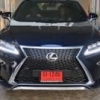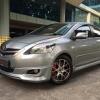Search the Community
Showing results for tags 'inflation'.
-
Other than Daiso rising their prices, food prices are hitting its highest even when not considering the Russia-Ukraine war is disrupting food and fuel prices. Inflation are estimated to hit 2.5% to 3.5% by the 3rd quarter of 2022. Even Indonesia has stop exporting palm oil to keep for their domestic use. We will see prices of cooking oil, shampoo/soap, snacks like chocolate rise. https://www.channelnewsasia.com/singapore/hawkers-say-they-have-raise-prices-survive-rising-cost-ingredients-hits-hard-2653076 If hawkers are affected so will the rest of the F&B establishment. Eating at a cafe or restaurant will set your bill higher as they are struggling not only with operational cost (power/gas bills), food/ingredient prices but also manpower issues. Our pay isnt rising enough to cope with this inflation. Things like medical insurance are rising annually. Bills like power and water have risen significantly over the past couple of years and it is going to rise some more. Knnbccb.
- 5,691 replies
-
- 7
-
.png)
-

-

-

-
- inflation
- food prices
-
(and 4 more)
Tagged with:
-
Households to pay more for waste disposal from July 1 due to rising costs SINGAPORE - From July 1, residents will need to pay more for public waste collection due to rising operational and manpower costs. The National Environment Agency (NEA) said in a statement on March 28 that monthly household refuse collection fees for Housing Board flats and non-landed private housing will rise from $9.81 to $10.20, an increase of 39 cents. The monthly fee for those living in landed homes will go up from $32.67 to $34, an increase of $1.33. NEA said: “The revised fees ensure that Singapore’s overall waste management system can operate sustainably.” Household refuse collection fees are reviewed biennially, or once every two years, it added, noting that average charges by public waste collectors have increased over the past few years in tandem with rising operational and manpower costs. Every month, each household pays one of Singapore’s three public waste collectors a refuse collection fee through its monthly utility bill. These public waste collectors – 800 Super Waste Management, Alba W&H Smart City and SembWaste – were appointed through open competitive tenders, NEA said. NEA said those living in HDB flats can offset their refuse collection fees through U-Save rebates, which are given quarterly. The rebates for the 2024 financial year will be credited in April, July, October and January 2025. The rebates are credited directly to eligible households’ utilities accounts managed by utility provider SP Services. https://www.straitstimes.com/singapore/households-to-pay-more-for-waste-disposal-from-july-1-due-to-rising-costs still got smlj fee / levy / charges etc not yet increase one hah ?
- 53 replies
-
- 2
-
.png)
-

-
- waste disposal
- inflation
-
(and 1 more)
Tagged with:
-
New money inflows to Singapore jump 59% to a record S$448b in 2021 SINGAPORE can absorb record inflows of new money, the central bank chief said, allaying concerns of a real estate bubble even as rents and prices surge to unprecedented highs. The Asian financial hub attracted S$448 billion last year, 59 per cent higher than the previous year, the latest data from the Monetary Authority of Singapore (MAS) show. “When a large sum of money comes into any country, you should be worried about it,” MAS managing director Ravi Menon said in an interview with Bloomberg Television’s Haslinda Amin. One such concern is flowing into the property market driving up prices. Rather than blocking money coming in, the regulator has imposed measures on the real estate sector to prevent overheating. “We’ve got that under control,” he said. Singapore’s efforts to build an international wealth hub are paying off as the city enjoys a post-Covid resurgence, attracting investors drawn to its stability. Assets managed by local firms soared 16 per cent in 2021 to US$4 trillion, mostly from overseas, exceeding the global growth rate. Investors from US hedge-fund titan Ray Dalio to Indian billionaire Mukesh Ambani are setting up offices to manage their personal wealth. The housing market has defied a slump reported in other major markets including Australia, Hong Kong and Canada. As prices jumped 7 per cent in the first nine months - including a sizzling 13 per cent in the third quarter alone - the government took steps to cool the market. Landlords meanwhile are asking tenants for big rent increases, sometimes as much as double, when they extend leases. The inflows, which are roughly three quarters of Singapore’s nominal gross domestic product, come on top of gains from higher asset prices last year, according to the central bank. The assets are helping to boost the financial hub as it seeks to add as many as 20,000 finance jobs over five years, in areas including wealth management and sustainable financing. Asia flows Menon said money is coming from growing wealth across Asia, where the rich are seeking a place to invest. He acknowledged that North Asia’s affluent contribute a large portion of asset flows into Singapore. “They are richer, they have more investible assets,” he said, speaking ahead of Singapore’s FinTech Festival that starts on Wednesday (Nov 2). In China, Asia’s largest wealth market, assets plummeted following the Communist Party congress, where President Xi Jinping solidified his grip on power. Asked whether China may see accelerated capital outflows, Menon said it’s too early to tell. “There’s already some happening,” he said. “Some of it have come to Singapore, you would have seen in the last few years. I am not sure we are looking at any marked pickup.” In the meantime, Singapore’s capital and financial markets, as well as its banking system, are deep and liquid enough to handle large fund flows, he said. MAS, which also serves as a financial regulator, is strict when it comes to illicit fund flows, repeatedly reminding financial institutions to be on guard, Menon said. “There’s so much money coming in, you can choose,” he said. Other interview highlights: MAS has been focusing on strengthening disclosure rules by listed companies to deter firms from misconduct Singapore is not aiming to become a cashless society even though digital payments are becoming common https://www.businesstimes.com.sg/government-economy/new-money-inflows-to-singapore-jump-59-to-a-record-s448b-in-2021 curious to see what the inflow amount is for 2022 ...
-
Cost of treating and supplying water in Singapore up significantly, says PUB Due to higher construction and manpower costs, the second phase of the Deep Tunnel Sewerage System will cost S$6.5 billion – almost twice that of the first phase. SINGAPORE: The cost of treating and supplying water has risen significantly with energy and construction costs driving up expenses, said national water agency PUB on Friday (Sep 22). Achieving water security has become “more challenging” globally and Singapore is no exception, PUB said during a progress update of the Tuas Water Reclamation Plant. About a third of the plant – a key component in the second phase of Singapore’s Deep Tunnel Sewerage System (DTSS) – has been completed. Some of the challenges include climate change which has increased the frequency of extreme weather, increased water demand that is projected to almost double by 2065, as well as external cost pressures due to global supply chain disruptions and geopolitical events. “These external cost pressures are not unique to PUB,” said the agency, highlighting the increased costs for energy, construction, chemicals and maintenance. Energy costs have gone up as the average electricity tariffs increased by almost 37 per cent since 2017 – and about 50 per cent at its peak – due to rising fuel prices. “With increasing water demand, PUB needs to tap on more energy-intensive supply sources such as desalination and NEWater, and treat more used water,” said the agency. Overall construction costs in Singapore have gone up by 35 per cent since 2017. Constructing water infrastructure in an increasingly urbanised environment is more costly as it involves building more compact structures to lower land footprint, and adopting less-intrusive construction methods to minimise the need for road or utility diversions, said PUB. Citing an example of a less-intrusive method of constructing pipelines known as pipejacking, PUB said the cost of using this method is now S$17 million (US$12.4 million) for every kilometre - a 70 per cent increase from the S$10 million per km in 2017. Due to higher construction and manpower costs, the second phase of DTSS will cost S$6.5 billion. This is almost twice that of Phase 1, which cost S$3.4 billion when it was built almost two decades ago, said PUB. The cost of constructing the deep tunnels for Phase 2 has also more than tripled, the agency added. In addition, the operating expenses for chemicals, which are key materials in the water treatment process, have grown by about 33 per cent since 2017. The maintenance costs of the water system have also risen by 18 per cent, as COVID-19 and supply chain disruptions have driven increases in costs for manpower and parts for the water system. SAVING ENERGY, SPACE AND COSTS To improve energy efficiency, the Tuas Water Reclamation Plant will incorporate water treatment technologies to allow the plant to generate 80 per cent of the energy it requires to treat used water. This is a “vast improvement” compared to the 25 per cent at the water reclamation plants in Ulu Pandan and Jurong, said PUB. The plant will also increase the rate of NEWater recovery without using additional energy. To offset higher construction costs, treated effluent will be directly discharged into the sea. This way, a long and deep discharge pipe need not be constructed, which would have cost at least S$650 million, said PUB. The national water agency added it will also implement technologies at the Tuas Water Reclamation Plant for 30 per cent more compact treatment units compared to the conventional ones, thus reducing land footprint. Biological treatment processes for odour control and primary treatment of used water will be deployed at the plant to reduce the need for chemicals. PUB added that it is also implementing smart technologies such as online sensors and automated systems to ensure the plant’s operations are cost- and manpower-efficient. https://www.channelnewsasia.com/singapore/tuas-water-reclamation-plant-energy-construction-pub-deep-tunnel-sewerage-system-3788511 Cost of delivering water continues to rise and will need to be reflected in water prices: Amy Khor https://www.straitstimes.com/singapore/cost-of-delivering-water-continues-to-rise-and-will-need-to-be-reflected-in-water-prices-amy-khor brace brace brace
- 75 replies
-
- 12
-
.png)
-

-

-

-
https://www.straitstimes.com/singapore/household-incomes-rose-in-2022-income-inequality-fell SINGAPORE – Median household income grew in 2022 and income inequality fell when compared with 2021, figures released by the Singapore Department of Statistics (SingStat) on Thursday showed. Among resident employed households, monthly household income from work grew by 6.1 per cent in nominal terms, or before adjusting for inflation, from $9,520 in 2021 to $10,099 in 2022. Median monthly household income from work rose 0.2 per cent in real terms, or after adjusting for inflation, in 2022. Household income from work includes employer Central Provident Fund (CPF) contributions. From 2017 to 2022, median monthly household income from work of resident employed households increased 2.9 per cent cumulatively, or 0.6 per cent per annum in real terms. Such households have at least one employed person, and the household reference person – previously referred to as the head of household – is a Singapore citizen or permanent resident. Taking into account household size, median monthly household income from work per household member rose from $3,027 in 2021 to $3,287 in 2022, an increase of 8.6 per cent in nominal terms, or 2.6 per cent after adjusting for inflation. From 2017 to 2022, median monthly household income per household member grew by 11.9 per cent cumulatively, or 2.3 per cent per annum in real terms. Rise in income for all but top earners Households across most income deciles saw increases in average household income from work per household member after adjusting for inflation. In 2022, the average household income from work per household member of resident employed households in all income groups rose in nominal terms, with the increases ranging from 5.3 per cent to 15.6 per cent. After adjusting for inflation, households in the first nine deciles saw real income growth of 1.1 per cent to 10.1 per cent, while those in the top decile saw a real income decline of 1.3 per cent. Between 2017 and 2022, the average household income from work per household member of resident employed households in the first nine deciles rose 1.5 per cent to 3.0 per cent per annum in real terms, while that in the top decile recorded a decline of 0.4 per cent per annum in real terms. The decline experienced by the top decile was because of a larger increase in household size from 2.26 in 2021 to 2.34 in 2022, compared with households in the other deciles. This, coupled with higher inflation experienced in 2022, contributed to the decline in their real household income in 2022. More money distributed through government schemes Resident households, including households with no employed person, received $5,765 per household member, on average, from government schemes in 2022. This was higher than the $5,257 received in 2021, due to the one-off and transitionary measures in 2022, as well as enhanced schemes, to cushion the impact of the goods and services tax (GST) rate increase and higher inflation on cost of living, said SingStat. Resident households living in one- and two-room Housing Board flats continued to receive the most money from the Government. In 2022, they received $12,189 per household member, on average, from government schemes, close to double the amount received by resident households living in HDB three-room flats. The Gini coefficient based on household income from work per household member – before government transfers and taxes – fell to 0.437 in 2022, from 0.444 in 2021. The Gini coefficient is a measure of income inequality. A Gini coefficient of zero occurs when there is total income equality, and a coefficient of one means there is total inequality. After adjusting for government transfers and taxes, the Gini coefficient in 2022 fell from 0.437 to 0.378. “This reflected the redistributive effect of government transfers and taxes,” said SingStat. Nonetheless, this is still slightly higher than the Gini coefficient of 0.375 in 2020, which was the lowest on record. The report, Key Household Income Trends, 2022, is available on SingStat’s website.
-
New BudgetMealGoWhere portal to help residents find cheaper meals in HDB coffee shops A new website to help residents find cheaper meals in the neighbourhood was launched by HDB and GovTech on May 19 Named BudgetMealGoWhere, about 40 participating coffee shops are listed for a start Coffee shops and the available budget meal options will start with those located within 2km of the postal code entered HDB said that budget meals will progressively be offered at all 374 HDB rental coffee shops by 2026 Patrons and stall owners interviewed generally welcomed the new initiative and made some suggestions on what they would like to see SINGAPORE — A new portal has been launched to help consumers easily locate Housing and Development Board (HDB) coffee shops offering budget meals. HDB and the Government Technology Agency (GovTech) said in a joint statement on Friday (May 19) that the new “BudgetMealGoWhere” website will allow the public to search for HDB coffee shops offering budget meals near their location and view the budget meals and drinks available at these places. This can be done by entering a postal code in the website’s search box. A list of the coffee shops and the available budget meal options will appear, starting with those located within 2km of the postal code. The portal will also be accessible through the LifeSG mobile application and website. Budget meal options refer to lunch or dinner meals that are priced affordably compared to the average price of meals sold at nearby eating establishments. These budget meals must be full meals, and not side dishes, snacks, children's meal or half-portion meals. Ms Sim Ann, Senior Minister of State for National Development, announced in Parliament in March that all coffee shops leased from HDB have to offer budget meal options upon their tenancy renewal starting May. As a start, all older coffee shops leased from HDB that are due for renewal will need to provide four budget meals and two budget drinks across two or more different stalls as a condition of their tenancy renewal. Two of the budget meals must be rice-based and one must be halal. These coffee shops must also offer at least two budget drinks, which are black coffee (kopi-o) and black tea (teh-o). "The budget meal and drink prices will be benchmarked against economically priced food-and-beverage offerings in nearby neighbourhood coffee shops," Ms Sim said at the time. Ms Sim Ann, Senior Minister of State for National Development, announced in Parliament in March that all coffee shops leased from HDB have to offer budget meal options upon their tenancy renewal starting May. As a start, all older coffee shops leased from HDB that are due for renewal will need to provide four budget meals and two budget drinks across two or more different stalls as a condition of their tenancy renewal. Two of the budget meals must be rice-based and one must be halal. These coffee shops must also offer at least two budget drinks, which are black coffee (kopi-o) and black tea (teh-o). "The budget meal and drink prices will be benchmarked against economically priced food-and-beverage offerings in nearby neighbourhood coffee shops," Ms Sim said at the time. There are a total of 776 coffee shops in Singapore, of which 374 are under HDB and 402 are privately owned. On the new BudgetMealGoWhere website, about 40 coffee shops are listed, with more being progressively added. “HDB will work with GovTech to continually improve the website’s functionality and listing to make it more useful for Singaporeans, and members of the public can also provide feedback on the budget meals,” the two agencies said. To help customers in identifying budget meals more easily, participating stalls will display the budget meal decal stickers on their food display signage, indicating the budget meals on offer. HDB has completed 37 new coffee shops in the last five years as part of efforts to ensure that residents have access to affordable cooked food, the two agencies added. "Another 34 coffee shops are slated for completion in the next five years, to meet the needs of residents." WHAT PATRONS, FOOD SELLERS SAY Commenting on the new initiative, customers and food stall owners who spoke to TODAY generally welcomed it and suggested how it can be improved. TODAY visited three coffee shops, all of which were among the 40 participating coffee shops listed on the website. Most patrons could see themselves using the site, but some mentioned how it might present problems for older users. Madam Sissi Lin, a scientist who did not want to reveal her age, said: “I think it’s quite comprehensive. I’m just concerned because I believe there will be some older people who might want to use it. Maybe the font size of the text can be bigger (for those who find it hard to reading small print).” One suggested that photographs can accompany the meals being listed. Mr Jason Lim, a 22-year-old engineer, said: “It would be nice if there are pictures of the food or reviews. Maybe it’s cheap but the portion is small. If there are pictures or reviews, people will know.” Madam Noradila Affandi, 37, who works in the digital security field, suggested having pictures of the coffee shops for people to recognise them easily. Civil servant Benjamin Tan, 31, said: “They show some coffee shops that are way too far. There are a few coffee shops in Clementi but they are probably not listed yet." Stall owners generally believed that the new website will help to bring in more customers. Mr Kelvin Lee, 26, who runs an economical rice stall at a coffee shop in Bukit Batok, said that he had seen about 30 more customers than usual who have bought the budget meal, which is a rice with meat and two kinds of vegetables at S$3. The BudgetMealGoWhere website is at https://www.gowhere.gov.sg/budgetmeal/. https://www.gowhere.gov.sg/budgetmeal/ https://www.todayonline.com/singapore/new-budgetmealgowhere-portal-help-residents-find-cheaper-meals-hdb-coffee-shops-2175151 only 40 coffee shops are on BudgetMealGoWhere at present. hopefully more will come on for this initiative to gain traction and awareness.
- 25 replies
-
- 6
-

-
https://asia.nikkei.com/Economy/Inflation/Singapore-Malaysia-Indonesia-unleash-cash-to-ease-inflation-bite?utm_campaign=GL_asia_daily&utm_medium=email&utm_source=NA_newsletter&utm_content=article_link&del_type=1&pub_date=20220706123000&seq_num=2&si=44594 Singapore, Malaysia, Indonesia unleash cash to ease inflation bite Governments attempt to balance political pressures with fiscal discipline A woman shops at a supermarket in Singapore. Food prices have surged in Southeast Asia. (Photo by Takashi Nakano) TAKASHI NAKANO, Nikkei staff writerJuly 6, 2022 04:34 JST SINGAPORE -- Southeast Asian governments have started to roll out another round of economic relief packages to help citizens stay afloat in difficult economic times, but this time the funding is targeting the fallout from inflation instead of COVID-19. Across the region, people are struggling to make ends meet as the Ukraine war as well as persistent supply chain disruptions have driven up the prices of everyday items. With several countries getting ready to hold elections in the next 18 months, officials have made moves to disperse cash before people vote with their wallets. Singapore has announced a stimulus measure worth 1.5 billion Singapore dollars ($1.07 billion) that assists households and small businesses. Individuals earning SG$34,000 or less a year will receive as much as SG$300 in August. Taxi drivers and couriers struggling with high fuel prices will receive payments between SG$150 and SG$300. All households will also receive a SG$100 utility credit. In addition, the government will provide financial subsidies for small and midsized food manufacturers and retailers that adopt fuel-efficient equipment. In Malaysia, Prime Minister Ismail Sabri Yaakob said households in the bottom 40% income bracket will receive payments of 100 ringgit ($22.65) while individuals in that same bracket will receive 50-ringgit payments. Relief payments will total 630 million ringgit, benefiting 8.6 million people. The government also froze hikes on electricity and water fees on June 24. The Thai government has granted a three-month extension to ongoing relief measures, which will now run until September. Assistance includes cooking gas subsidies for low-income people. In Indonesia, the cash payments are being directed to roughly 20 million households and 2.5 million street food vendors in response to surging cooking oil prices. These measures come amid historically high inflation rates. Thailand's consumer prices rose 7.66% in June from a year earlier, marking a 14-year high. Singapore's consumer prices in May jumped 5.6%, the fastest pace in more than 10 years. "The support measures in this package are tilted toward helping our lower-income and vulnerable groups, because they are the ones who are disproportionately impacted by the effects of inflation," Lawrence Wong, Singapore's minister of finance and deputy prime minister, said when announcing the support package last month. There is also a political wrinkle to the relief measures. Malaysia and Thailand will hold general elections by the end of 2023. Governments often take the blame for inflation and the lower quality of living that can come with it. Malaysian Prime Minister Ismail Sabri said last month that the price caps on chicken that were due to expire in July will be kept in place to "safeguard the interests" of the Malaysian people. In Singapore, Wong has been appointed as the successor of the current Prime Minister Lee Hsien Loong. As such, Wong is leading the relief rollout. "You have my word that if the situation worsens significantly, we will be prepared to do more, especially to provide targeted help for the lower-income groups," Wong told lawmakers on Monday. However, the additional relief packages risk damaging national finances already strained by the pandemic response. Some countries have already begun to show signs of lax fiscal discipline. Last year, Thailand raised the cap on government debt to 70% of gross domestic product from 60%. That same year, Malaysia raised the debt ceiling to 65% of GDP from 60%. "Southeast Asian countries have relatively low shares of debt that are denominated in foreign currencies, so there will be no problems in terms of short-term funding," said Hiromasa Matsuura, senior economist at Mizuho Research & Technologies. "However, interest rates are expected to rise, so care needs to be taken toward additional fiscal burdens." The Thai baht has sunk to a five-and-a-half-year low against the U.S. dollar. Concerns over economic stagnation caused by inflation, as well as over deteriorating fiscal conditions, could lead to a weaker currency and accelerated capital outflows. Singapore plans to fund its SG$1.5 billion economic relief package with additional tax revenue. The government has committed to go ahead with plans to hike the national sales tax on next year and in 2024, despite inflationary pressures. According to Malaysia's 2023 budget proposal released last month, the financial subsidies will not be universal. Instead, the government is set to take a "more targeted approach" that focuses on vulnerable income level groups. A prolong conflict between Russia and Ukraine may lead to long-term high food and energy prices. Those least able to weather these trends are becoming increasingly impatient. "A single cash payment is not going to erase my struggles," said Latifah Ismaill, a janitor in Singapore.
-
https://markets.businessinsider.com/news/stocks/stock-market-outlook-recession-stagflation-debt-crisis-nouriel-roubini-economy-2022-7?utm_source=facebook.com&utm_campaign=sf-bi-main&utm_medium=social "Dr. Doom" economist Nouriel Roubini says stocks could plunge another 50% as the US heads towards a severe financial crisis Nouriel Roubini, an economics professor, speaks at a panel discussion at the SALT conference in Las Vegas May 14, 2014. REUTERS/Rick Wilking Nouriel Roubini, the economist known as "Dr. Doom", thinks the US is headed for a severe recession, a crisis that could send stocks falling another 50%. In a column on Project Syndicate, Roubini said the US had "ample reason to worry" about an impending recession, as the economy was currently showing characteristics of both the 1970s stagflation crisis and as the 2008 recession. "[The Federal Reserve] will eventually wimp out and accept high inflation," Roubini predicted of the central bank. He calls the prospect of a soft landing for the economy "dangerously naive," noting that the New York Fed places the odds of such a scenario at just 10%, and adds that the combined pressures of inflation and debt could push stocks down another 50%. For investors, that's a grim omen, as the S&P has already experienced its worst half year since 1970. "In the current context, any rebound – like the one in the last two weeks – should be regarded as a dead-cat bounce," Roubini said -- not an opportunity to buy, like some market optimists have been touting. "The next crisis will not be like its predecessors," Roubini wrote. "Today, we face supply shocks in a context of much higher debt levels, implying that we are heading for a combination of 1970s-style stagflation and 2008-style debt crises – that is, a stagflationary debt crisis." The Frankenstein-style financial meltdown, the economist suggests, has been a source of anxiety for economists and central bankers in the past year, as prices continued to rise amid supply-chain pressures. In April, the New York Fed found that the Global Supply Chain Pressure Index surged to 3.29, the first increase since 2021. That was just a month before the CPI clocked in at a record 8.6% for the month of May, the highest hike in prices since 1981. Roubini has earned a reputation for being exceedingly bearish in the economic realm, earning him the title of "Dr. Doom" or "permabear," as the New York Times referred to him in 2008. Those titles aren't without merit, as Roubini was among the first to sound the alarm in the mid 2000s on the coming Great Recession, calling the housing crisis over a year before the blowup of the subprime mortgage market. "There is no real riddle to solve," he warned. "Things will get much worse before they get better."
-
ok ... going to order chai peng ... peng only ... no vege no egg .... is $5K still the new poor ... should be $6K liao now ...
-
Source: https://www.straitstimes.com/life/entertainment/netflix-raises-price-of-spore-subscription-plans-by-1-to-2 SINGAPORE - Streaming giant Netflix has raised its prices in Singapore. The service behind hit series like the recent K-drama Squid Game and British comedy drama Sex Education (2019 to present) has three monthly pricing plans. With the revision, a basic plan will go from $11.98 to $12.98 and a standard plan will go from $15.98 to $17.48. A premium plan will see the largest increment of $2 from $19.98 to $21.98. A premium plan allows titles to be streamed in Ultra HD and up to four screens can be in use at the same time. The new prices came into effect on Oct 7 and will be rolled out to existing subscribers over the coming weeks, and to all new subscribers immediately. Existing subscribers will be notified by e-mail a month before the new prices are applicable to them. Netflix last adjusted prices for Singapore users in January 2020, making this the service's second price increase in less than two years. Local user Shay Hu, 27, a marketing associate at an e-commerce platform, says she will continue using the service. She subscribes to its premium plan for the Ultra HD function. She says: "If I cancel it, what will I watch? I'm not a big fan of Disney properties so I won't get Disney+ and I don't watch too much HBO either. "And at $21.98, I think it's still within an affordable range for me since the service is used by my parents too." Human resources executive Alicia Tai, 27, says Netflix's strong content slate will keep her on. The K-drama fan says: "I'm subscribed to the premium plan and I can still deal with $21.98. The original shows produced by Netflix are quite good and there's a good variety of content on the platform." But if prices continue to go up in the future, she might consider quitting the service for Viu, another regional streaming service with a focus on Asian, especially South Korean, content. She adds: "If it goes up close to $25 a month, then I'll consider cancelling. Because that's around $300 a year, which is quite substantial."
- 15 replies
-
- netflix
- price hike
-
(and 2 more)
Tagged with:
-
i have seen most things go up...taxi fares, food and even tou sa pau. (actually food they quite smart, just give less, la) but that day ultimate... i went bowling... after me and my gf bowled 5 games, we were charged $41! so expensive!!! i didnt even have any skimply dressed gals serving me leh! can someone enlighten me is this the new pricing scheme? last time i remember i bowl only charge like $4.10 per game, now they charge me $4.10 per game for each person! so 1 game will cost us $8! if 1 game can put 10 people then is $42 per game?
-
Hi, anyone know where can I fill up balloon for party? Prefer central area. Thanks!
-
Interesting.... so pty go up or go down?!?! http://www.kitco.com/reports/KitcoNews2011..._deflation.html
-
https://sg.finance.yahoo.com/news/asian-stocks-mostly-upbeat-us-retail-sales-084209687--finance.html Since utility prices are pegged to oil, why hasn't PUB lowered the electricity tariffs?
-
Noticed that recently the DBS ATM starts to introduce "only $50 and $100 bills" available.... Looks like inflation is truly escalating and $100 bills becomes more common liao....
-
Mindless money printing- the S$308.4032B reason why Singapore inflation is so high nowadays. According to video 'Causes of inflation: Cost-push and demand-pull'[ ] Cost push inflation is input cost inflation caused by land, labour, capital, entrepreneurship- any increase in the cost of these factors increases the final product cost (i.e. an increase in CPI(Consumer Price Index)). Demand Pull inflation is caused basically by the demand upon certain goods, as measured by the number of dollars people are willing to wage to attain a certain product. In the general scheme of things, in so far that consumers and suppliers of goods and services (we are all participants in each part in our daily affairs) remain decent and honest persons, with the tendency to 'consume' measured by one's tendency to 'produce'(productivity)- then theoretically, there would be NO consistent CPI rise except the occasional isolated demand/supply imbalance due to natural disaster or war. But Singapore is quite insulated away from any significant natural disaster or war, so why has the average price of goods between 1989 (CPI=71.3) and 2009(CPI=100) increased (inflated) by (100.0-71.3)/71.3 = 40.25% over the 20 years?? [see Pict: 'Singapore Annual Inflation rate and CPI (1980-2012)/Singstat'] Studying the chart about 'Singapore Money Supply (DBU), M1,2,3, 1989 to 2012' for monetary supply changes between 1989 and 2009, one would easily note that M1 (Narrowly defined, money supply (M1) consists of currency in active circulation and demand deposits) M1 grew from S$13.7446B (1989) to S$93.4721B(2009)- a whopping 5.8fold increase over the 20years documented. (WRT to the M3 numbers of S$71.0078B(1989) vs S$378.5260(2009), the increase is a 4.33fold increase over 20 yrs) The official foreign reserves of Singapore between 1989 and 2000 are not available but according to 'Singapore official financial reserves (2001-2011)', the totals were S$139.7143B(2001) and S$308.4032B(2011)- amounting to a 1.207fold increase over the 10 year period (of course subject to variations in international currency exchange rates [SGD exc rt, 2001-2011]). According to 'Singapore Time Series on Population (Mid-Year Estimates)' using the 20 year interval where census were taken between 1990 and 2010, the local resident population increased from 2735.9K (1990) to 3771.7K(2010): a 37.86% Singapore resident population increase over the 20 years mentioned. Singaporeans have not become more lazy, on the contrary, according to 'Singstat: Trends in Productivity and Value Added by industry' 'total economy' (large olive green dot) productivity in Singapore has certainly increased between 1991 and 2011. Whilst currency exchange rates may be a proximate measure of the relative depreciation of a nation's currency relative to others due to the effect of over supply of one nation's currency as compared to that of another, it cannot be denied that all nations around the world, led by the USA, are into a conspiracy of freely printing money which is of course inflationary 'Chart: Estimated global monetary Aggregates (1971-2010)' - the chart showing an approx 3 fold increase in world M3 money supply between 1989 to 2009. Thus in 'Singapore's inflation may remain elevated for years to come: survey' [CNA, 24Jan2013] "survey by the Singapore Management University (SMU)... composite five-year-expectation is 4.97 per cent" Guess Singaporeans are all victims of a world wide government conspiracy to keep them always working (savings are always eroded by inflation) till the day they die, and also in power (the SG govt has S$308.4032B(2011) alone in foreign reserves and gold). So moral of the story is that governments all around the world should stop printing so much money to keep inflation under control and voters need to demand so (so as to safeguard one's retirement years). Guess in Singapore, recent curbs upon car loan and housing loan quantum(s) are merely cosmetic changes meant to fudge inflation statistics yet do minimal to improve the lives of the poor and downtrodden. Perhaps the Singapore government could lead the way forward by firstly not printing so much money which only breeds inflation if not hyper inflation as the population growth within a limited land area can only be so much. Perhaps the Singapore government could start the discussion by explaining to the populace what it intends to do with its SGD 308.4032B(2011) in foreign reserves (should be more by now), and please be reminded, that convenient half truths by Ministers really do not help. Picts below, Rgds, B.C. [PictSource: SG money supply] [PictSource: 'Singapore Annual Inflation rate and CPI (1980-2012)/Singstat'] [PictSource: SG official Foreign Reserves (YOS2012)] [PictSource: Time Series on Population (Mid-Year Estimates)(1970-2012)] [ ] [PictSource: SGD exc rates, finance (2001-2011), YOS2012] Tags: Inflation, foreign reserves, gold, government, Singapore, politics, printing, corruption, fraud, democracy, dictatorship, capitalism, currency, gold standard, Anyhow, nice music that I like that U too might like: .
-
QFT: 'Why It Makes Sense To Buy Gold' Good article by fund mgr (managing USD150M); article prob written for India audience, but facts about money printing aka Quantitative Easing (QE) initiated by the US FED remain relevant to the citizens of EVERY OTHER export dependent economy- competing to print $$$ (see 'currency war') to keep currency exchange 'stable'/ 'competitive'- e.g. Euro, China, Japan and even Switzerland etc etc will result in escalating price inflation internationally, which would make physical gold an attractive hedge against inflation secondary to money printing (aka QE). See related: - 'Singapore's inflation may remain elevated for years to come: survey' (CNA, 24Jan2013) - http://en.wikipedia.org/wiki/Gold_as_an_investment
- 7 replies
-
- Inflation
- ForbesIndia
-
(and 3 more)
Tagged with:
-
weather forecast not looking good... --- Singapore's Inflation rate edges up in December By Yvonne Chan | Posted: 23 January 2013 1408 hrs --- SINGAPORE: Singapore's inflation rate accelerated last month driven once again by housing and transport costs. Department of Statistics data showed the Consumer Price Index (CPI) in December 2012 rose 4.3 per cent from a year earlier, after increasing 3.6 per cent on-year in November. Accommodation cost inflation reached 8.5 per cent in December, following a 6.6 per cent gain the previous month. This was attributed largely to the costs of rented accommodation and minor repairs & maintenance which picked up sharply as a result of the disbursement of government rebates for HDB households. Imputed rentals on owner-occupied accommodation contributed 1.2 percentage points to overall inflation. In tandem with the recent surge in COE premiums, private road transport cost climbed 9.3 per cent year-on-year in December after increasing 6.7 per cent in November. Together, accommodation and private road transport costs accounted for more than two-thirds of CPI "All Items" inflation in December. Meanwhile, services inflation dipped to 2.5 per cent from 2.9 per cent, led by a decline in telecommunication charges and a more moderate rise in the costs of holiday travel and medical treatment. Food inflation eased to 1.5 per cent in December from 1.7 per cent in the previous month, as price increases for both non-cooked food and prepared meals slowed. MAS core inflation, which excludes the costs of accommodation and private road transport eased to 1.9 per cent from 2.0 per cent due to lower contribution from costs of services and food. For the whole of 2012, MAS core inflation was 2.5 per cent compared with 2.2 per cent in 2011. In a statement, the Monetary Authority of Singapore (MAS) said that given the continued weakness in the global economy, imported inflation will be "generally benign". Although the central bank warned that the persistent tightness in the labour market will support wage increases in 2013, part of the wage rises will be passed through to consumer prices. As a result, MAS core inflation is expected to average 2 to 3 per cent for the whole of 2013. - CNA/al
-
http://www.bloomberg.com/news/2012-12-05/r...pore-wages.html When dozens of Chinese bus drivers held Singapore
-
which wise guy said that poorer families are not as badly impacted by inflation as the rich? [sINGAPORE] Inflation is still not coming down and appears to have hit poorest households hardest in the first half of this year. Policymakers expect inflation to moderate in the second half of the year after June's rebound to 5.3 per cent, but high inflation makes any loosening of monetary policy dicey, even as slowing growth raises the need to. The government now expects inflation in 2012 to come in at the upper half of its 3.5 to 4.5 per cent forecast range. June's consumer price index (CPI) was unchanged from a month ago, but the latest year-on-year jump brings inflation for the first half of 2012 to 5.1 per cent. Inflation's impact on households varies across different income groups, a separate report released by the Department of Statistics (DoS) yesterday shows. Worst hit were the bottom 20 per cent of households, for whom inflation rose from 5.4 per cent in the July to December period last year, to 6.3 per cent in the first half of this year. Inflation for the middle 60 per cent income group slipped from 5.4 per cent to 5.2 per cent, while for the richest fifth of households, inflation eased from 5.7 per cent to 4.6 per cent. DoS emphasised that overall inflation numbers are due to higher imputed rentals on houses occupied by their owners. This does not have an impact on cash expenditures of those who own their homes. Excluding these imputed rentals, inflation was comparable across income groups. But the poorest 20 per cent of households still saw inflation rising most, from 2.6 per cent in H2 2011 to 4.1 per cent for H1 2012. The middle income group's inflation slipped from 4 per cent to 3.9 per cent, while inflation slowed for the top 20 per cent, from 5 per cent to 4 per cent. UniSIM senior lecturer Tan Khay Boon noted that lower oil and commodity prices may help lower income households, which tend to spend a larger portion of income on food. However, the lowest income group also faced higher healthcare cost inflation of 4.3 per cent, compared with the middle and high income households' 4 and 3.9 per cent. "Healthcare cost may increasingly be a burden to the low income group and more assistance in this area may be needed," he said. Housing and transport costs were the main culprits driving up the CPI by a faster-than-expected 5.3 per cent in June from a year ago. This came after inflation had slowed to 5 per cent in May from April's 5.4 per cent. This choppy trend is partly because rebates for service and conservancy charges (S&CC) were disbursed to HDB households in April and June last year but not this year, exacerbating cost hikes this April and June. Still, accommodation cost inflation has been stronger than the authorities expected. "Leasing contracts continue to be renewed at significantly higher rental rates, especially in the HDB segments," the Monetary Authority of Singapore (MAS) and Ministry of Trade and Industry (MTI) said in joint comments yesterday. Accommodation costs sped up to rise 10.8 per cent year-on-year in June contributing 2.2 percentage points of June's inflation, up from 1.8 percentage points in May. Car prices surged from a year ago but lower petrol prices and ERP charges helped slow the rise in private transport cost, from May's 10.3 per cent to 9.7 per cent in June. Excluding accommodation and private road transport (which formed two thirds of June's inflation), MAS's core inflation measure held steady at 2.7 per cent for a third straight month. Sharper spikes in clothing and footwear prices were offset by slower price gains in other segments of the CPI basket. Services inflation slid from 2.9 per cent in May to 2.8 per cent in June, while food inflation slowed from 2.5 per cent in May to 2.3 per cent in June. "The pass-through of wages and other business costs to consumer prices will continue, but at a more moderate pace," MAS and MTI said. They also expect earlier weakness in global commodity prices to dampen pressures on oil and food items in the near term. But UOB economist Alvin Liew thinks the recent surge in soft commodity prices, due to parched weather conditions in key farming regions, may lead to higher food prices in the second half of this year. Barclays economist Leong Wai Ho thinks so too, noting that corn, wheat and soybeans prices are at least 30 per cent higher than what they were at the start of the year. Food weighs 22 per cent in the CPI basket of goods, compared with accommodation's 20 per cent and private road transport's 11.6 per cent. Stubborn inflation implies a "tougher balancing act" for the MAS, Mr Leong says. Already, Singapore's growth has slowed, sparking talk of a technical recession and raising the odds that MAS may ease monetary policy in October. While most economists still expect the MAS to keep policy tight to stem inflation pressures, Mr Leong thinks growth concerns are likely to overshadow inflation, unless coordinated easing by global central banks turns the global economic outlook rosy. Citi economists Kit Wei Zheng and Brian Tan said in a note yesterday that expected near-term inflation of 4 per cent sets the hurdle high but is "not an insurmountable obstacle for monetary easing", given that weaker growth could set the stage for disinflation next year.
-
http://www.straitstimes.com/STForum/Story/...ory_808456.html The Straits Times www.straitstimes.comPublished on Jun 8, 2012 CPF Minimum Sum should reflect 'true' inflation THE report ('CPF Minimum Sum to be raised'; May 31) stated that the Government has decided to raise the Central Provident Fund (CPF) Minimum Sum from $131,000 to $139,000 from July, instead of $143,000. The reduction is aimed at cushioning CPF members from the impact of the acute, inflation-driven spike, spreading the balance of $4,000 until the new target date of 2015. When Trade and Industry Minister Lim Hng Kiang addressed the concerns over rising inflation in Parliament ('When big policies impact the little man in the street'; May 15), he cited big-ticket items like housing rentals and car prices as being responsible for the bulk of inflation. As most Singaporeans own their homes, the issue of rents is irrelevant to citizens, he explained. As for private cars, only a small part of the population buy cars, so the majority of people are also not affected by the high inflation. If these are the reasons for rising inflation, why is the Government applying the full annual inflation rate when adjusting for the increase in the Minimum Sum? Shouldn't the Government moderate the figure downwards - say, to two-thirds the actual inflation rate - to recognise that some major contributors to inflation do not affect most CPF members? Young Pak Nang Copyright
-
Ok our DPM cum IMF Chairman of International Monetary & Financial Comittee mentioned this recently: CNA: http://www.channelnewsasia.com/stories/sin...1198179/1/.html Govt closely monitoring inflation: DPM Tharman Posted: 29 April 2012 1843 hrs
-
The Straits Times The Straits Times Published on Apr 28, 2012 Printed from straitstimes.com Wages must rise faster with higher living costs: Minister Slow down income gap growth: Swee Say By Janice Heng The higher cost of living means that wages must go up faster, said labour chief Lim Swee Say on Friday. The widening of the income gap must also be slowed down, added the National Trades Union Congress (NTUC) secretary-general in a message ahead of the labour movement's celebrations on May Day on Tuesday. Inflation hit a high of 5.2 per cent last month, after staying at more than 4 per cent in the first two months of the year. In his message, Mr Lim also set out the challenges - old and new - which Singapore faces. Copyright
















